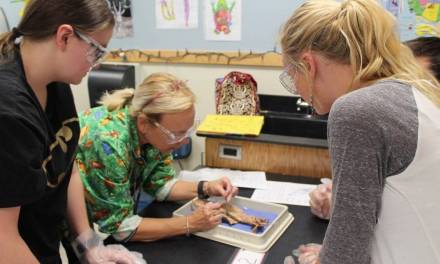How can schools close the gap and lure more girls into STEM? It’s a subject that’s generated much debate and a slew of initiatives, including Stemettes, Girls Into STEM and the WISE campaign’s People Like Me resource that address why girls aren’t taking up physics.
Here’s the numbers:
- To sustain current employment numbers, we need 100,000 graduates in science, technology, engineering and mathematics (STEM) subjects each year until 2020.
- Just 6% of the UK’s engineering workforce is female – way behind the US, at 14%.
- Girls outperform boys at GCSE, A-Level and degree level and yet there are clear gender differences in the higher education subjects they select. Only 13% of engineering, 22% of maths and 18% of technology places are taken by women. Compare this to the 89% of women who make up the UK’s nursing workforce.
- Last month’s A-level results revealed a dip in the number of girls sitting physics – a core requirement for engineering careers.
What do the experts suggest? Dr Charlotte Kemp, Clinical Scientist and Chartered Engineer at Middlesbrough’s James Cook University Hospital reckons:
Schools can encourage more young females to take up physics by spotting those with a talent for it early on and connecting them with others with a similar interest, so that they don’t feel like the only one who isn’t pursuing alternatives such as English or the Arts. It takes courage to be the only female in a class…
Anne-Marie Imafidon, founder of Stemettes and the youngest candidate to pass an A-Level in Computing, thinks that
…there needs to be education on what the jobs are in STEM and how much they pay and that they are places for women, and not just for women who don’t mind wearing hardhats and getting dirty…we don’t have as much of a problem in places like India…It’s definitely a societal thing.
The Women’s Business Council believes that “girls need access to the right careers advice and information at the right time, to support their decision-making and ensure they are ready for work in today’s competitive job market.”
As the discussion rumbles on some themes have emerged. There’s a consensus that schools need to:
- Recruit businesses to provide careers talks, work placements and prizes for talented female students, to help girls see the diversity of people and roles in STEM.
- Actively challenge gender stereotyping by pupils and teachers, across all subjects. The idea that “science is for boys” must be discouraged. Just one humanities teacher who looks momentarily surprised at a girl’s interest in science can influence pupils’ perception of STEM.
- Recognise that the common misconceptions about girls’ abilities in science aren’t reflected in academic results.
- Incorporate teaching styles that best suit boys and girls.
- Note that the really challenging task is to foster a trend. Research suggests that once a culture is established, the increase in girls taking STEM subjects seems to bed in.
What are your thoughts on girls and STEM? Let us know in the comments below!










